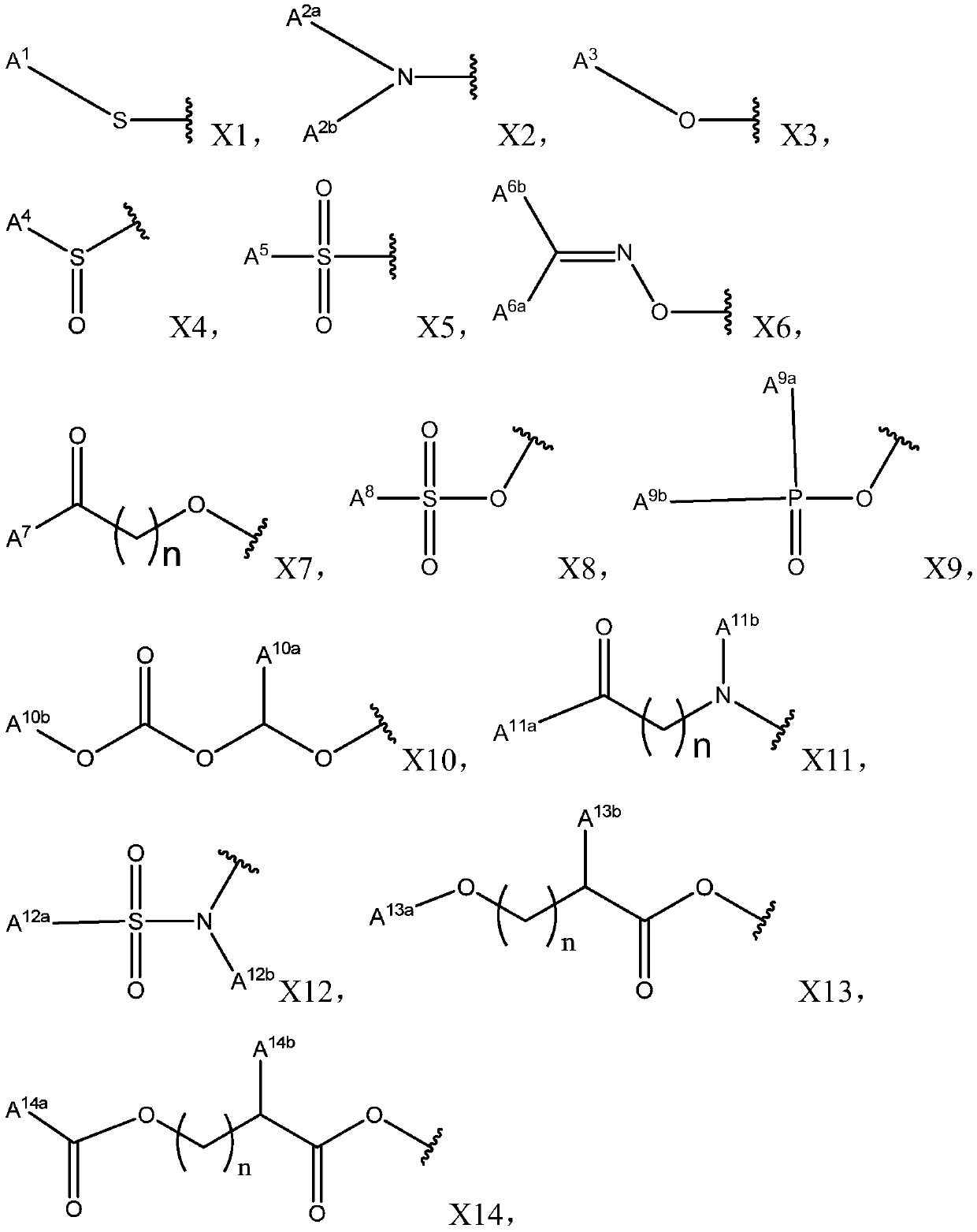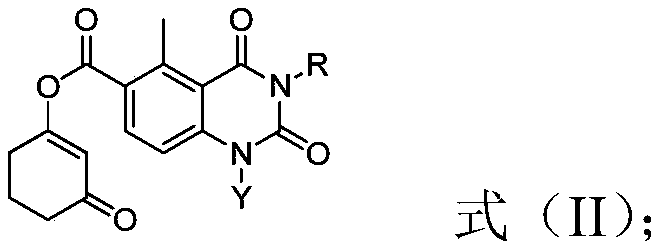Triketone compound containing quinazolinedione fragment, preparation method and application of triketone compound, and herbicide
A technology of quinazoline diones and compounds, applied in the field of herbicides of triketones, capable of solving problems such as the lack of HPPD-inhibiting herbicides
- Summary
- Abstract
- Description
- Claims
- Application Information
AI Technical Summary
Problems solved by technology
Method used
Image
Examples
preparation example Construction
[0129] According to the method for preparing the triketone compound of the structure shown in the formula (I) of the present invention, those skilled in the art can mix the compound of the structure shown in the formula (II) and the catalyst in the base according to the conventional conditions and operation of the rearrangement reaction. Contact is carried out in the presence of a solvent.
[0130] Preferably, the molar ratio of the compound of the structure shown in the formula (II) to the catalyst and the base is 1: (0.01-1): (0.5-4); more preferably, the compound of the structure shown in the formula (II) and the catalyst The molar ratio to base is 1:(0.05-1):(1-3).
[0131] Preferably, the contact conditions include: the reaction temperature is 0-100°C; the reaction time is 0.5-24h; more preferably, the contact conditions include: the reaction temperature is 20-40°C; the reaction time is 5- 12h.
[0132] It should be understood by those skilled in the art that the method...
preparation example
[0152] Preparation example (X is OH, Y is methyl)
[0153]
[0154] Add 50mmol of the compound shown in 1-1 into a 250mL reaction flask at room temperature, add 100mL of glacial acetic acid while stirring, then dissolve 50mmol of ICl into 30mL of glacial acetic acid, and add dropwise to the above reaction system within 15min while stirring , After the dropwise addition, continue to stir the reaction for about 2.5h. After the reaction was completed, the reaction solution was suction-filtered under reduced pressure, and the obtained solid was washed with 100 mL of acetonitrile and 100 mL of glacial acetic acid, respectively, and dried to obtain Intermediate 1-2, melting point: 186-188°C. 1 H NMR (600MHz, DMSO-d 6 ): δ8.97 (brs, 3H), 7.72 (d, J = 8.4Hz, 1H), 6.75 (d, J = 7.8Hz, 1H), 2.40 (s, 3H).
[0155] Add 10mmol of intermediate 1-2 into a 100mL two-neck flask, add 36mL of pyridine, and slowly add 11mmol of the substituted isocyanate shown in 1-3 into the system while sti...
PUM
 Login to View More
Login to View More Abstract
Description
Claims
Application Information
 Login to View More
Login to View More - R&D
- Intellectual Property
- Life Sciences
- Materials
- Tech Scout
- Unparalleled Data Quality
- Higher Quality Content
- 60% Fewer Hallucinations
Browse by: Latest US Patents, China's latest patents, Technical Efficacy Thesaurus, Application Domain, Technology Topic, Popular Technical Reports.
© 2025 PatSnap. All rights reserved.Legal|Privacy policy|Modern Slavery Act Transparency Statement|Sitemap|About US| Contact US: help@patsnap.com



